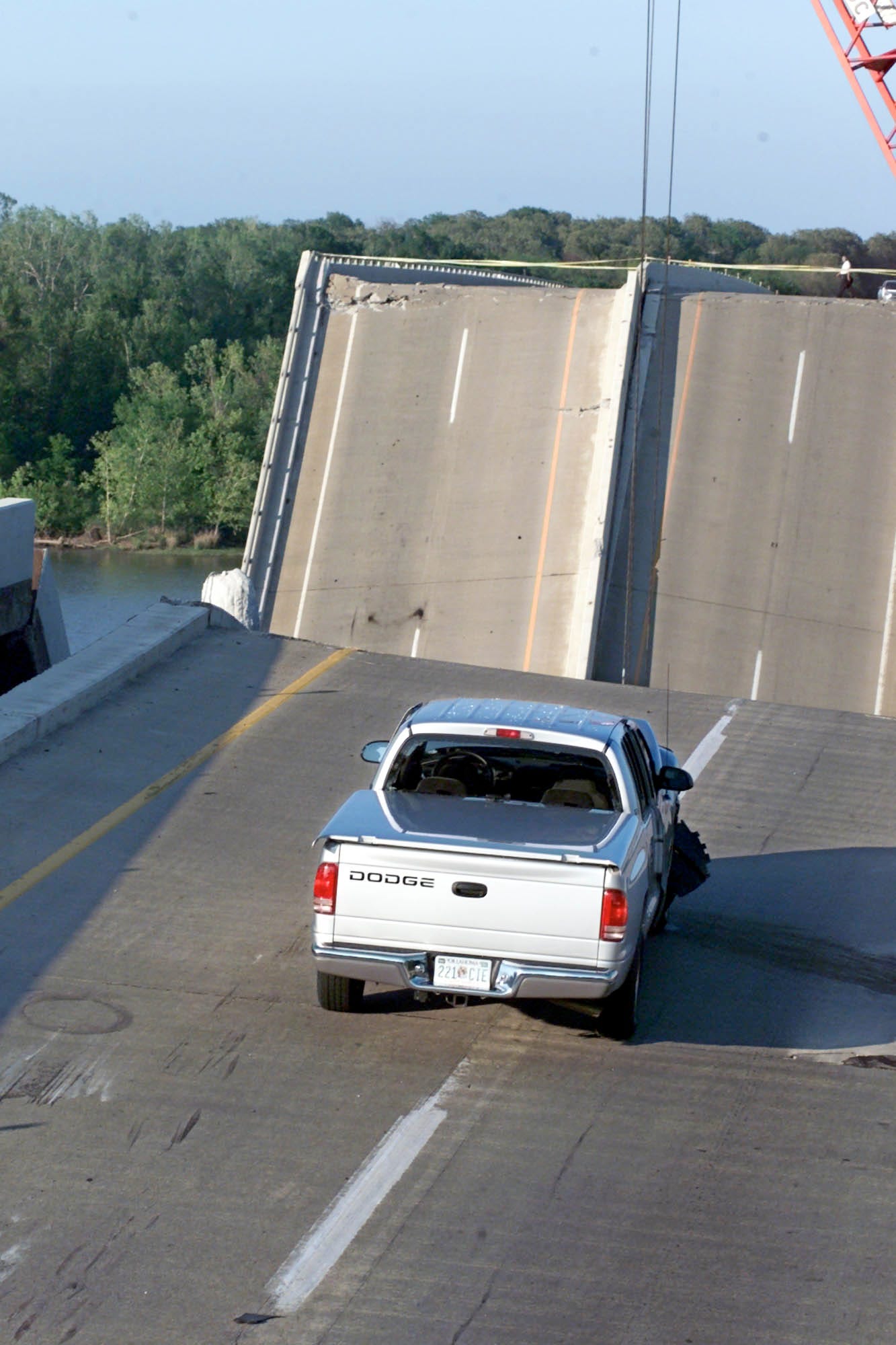

The Cherokee Nation, which controls the land around the site, facilitated the project by making work areas easily accessible to contractors. In this repair process, a limited amount of heat is applied in specific patterns to the deformed regions of damaged steel in repetitive heating and cooling cycles to produce a gradual straightening of the material.Ĭoordination among Federal, State, and Tribal governments was crucial to putting the bridge's rebuilding on the fast track. Other innovations used included precast concrete and heat-straightening to repair damaged steel girders. The contractor employed a technology that utilized computer chips to measure the temperature and strength of the concrete to keep engineers informed of any irregularities that occurred during the construction process. The new structure has concrete girders, with the exception of one span that is tied into the existing bridge. Gilbert Central built the bridge primarily out of concrete, which was easier than steel to bring into the area and could be poured on site. No cap was placed on the number of hours either way, but if the contractor took even a few days more than allowed to complete the project, it would cost the company close to half a million dollars. Gilbert Central would receive $6,000 for every hour it beat the contract schedule or lose $6,000 for every hour it exceeded it. ODOT also mandated large incentives and disincentives as part of the contract. With A+B bidding, contractors bid on both the work itself (A) and how soon they believe they can complete the work (B). Innovative contracting measures that ODOT used to speed up the project include A+B bidding, which the department has used for major projects for the past several years. The plans were completed in 12 days, which was a tremendous time saver for the project. The consultant that designed the reconstruction plans had been given 16 days to have biddable plans ready, with the contract providing an incentive of $5,000 for every day it beat the 16-day schedule and a disincentive fee of $2,400 for every day over 16. By this point, demolition and removal of the fallen section had been completed and reconstruction was ready to begin. On June 12, a special session of the Oklahoma Transportation Commission awarded the primary contract for the rebuilding to Gilbert Central Corporation. This was the first time ODOT had arranged a pre-bid meeting for potential bidders without having a complete set of construction plans. Traffic flows eastbound across the reconstructed bridge.Ī little more than a week after the disaster, ODOT held a pre-bid meeting at the bridge site so contractors could see the extent of the damage. The first vehicle breaks the ribbon at the I-40 reopening on July 29. "The quick response of the Oklahoma Department of Transportation, the Federal Highway Administration (FHWA), and private sector contractors combined with the innovative approaches provided for in the contracting and construction process serve as an example of how our country responds to meet challenges," said Federal Highway Administrator Mary Peters at the reopening. With a major coast-to-coast traffic artery interrupted by the bridge disaster, rapid reconstruction was imperative, and all parties came through brilliantly." "Our contractor, Gilbert Central, did an incredible job of organizing and carrying out a project that would normally take twice as long. The many organizations we have partnered with on this project have also given the utmost in work and cooperation," said Oklahoma Department of Transportation (ODOT) Director Gary Ridley at the reopening ceremony. I'm tremendously proud of the way our ODOT people responded to this crisis and the long, hard hours they worked. "Everyone connected with this project has given a maximum effort from the beginning. In addition to the tragic loss of life, the dramatic bridge collapse deprived the State of perhaps its most important east-west transportation link, costing millions in lost time and commercial revenue. The impact caused four of the bridge's approach spans to collapse. Fourteen people were killed on May 26, 2002, when a barge slammed into the bridge on Interstate 40 over the Arkansas River near Webbers Falls, Oklahoma.


In a record-setting display of accelerated construction, traffic began rolling over the reconstructed Interstate 40 bridge in eastern Oklahoma on July 29, just slightly more than 2 months after the bridge's collapse. Accelerated Bridge Repairs: Meeting the Challenge in Oklahoma


 0 kommentar(er)
0 kommentar(er)
